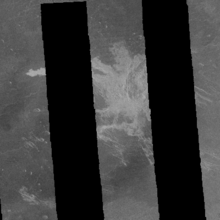Merit-Ptah ("Beloved of Ptah") was thought to be a female chief physician [1] of the pharaoh's court during the Second Dynasty of Egypt, c. 2700 BCE; she is purportedly referred as such on an inscription left on her grave at Saqqara by her son. [2] [3] [4] [5]
However, in recent times it has been argued that she most likely never existed, [6] being a modern 1938 invention of a Canadian feminist called Kate Campbell Hurd-Mead. [7] Jakub Kwiecinski, a historian at the University of Colorado, was cited by secondary source Newsweek arguing that the made-up story of Merit-Ptah exemplifies how "seemingly well-sourced Wikipedia articles" can mislead, and he cautioned against over-reliance on secondary sources. [8]
History
Merit-Ptah first appears in literature in a 1937 book by Kate Campbell Hurd-Mead on female doctors. [9] Campbell Hurd-Mead presents two ancient Egyptian female doctors, an unnamed one dating to the Fifth Dynasty and Merit-Ptah, dating evidently to the New Kingdom as Hurd-Mead states that she is shown in the Valley of the Kings (the burial ground of Egyptian kings from about 1500 BCE to 1080 BCE). The unnamed Old Kingdom female doctor is most likely Peseshet who is known from a tomb of the period.
Later authors did not notice that Kate Campbell Hurd-Mead presented two doctors and mixed the data of the two women; Merit-Ptah was thus back-dated to the Old Kingdom. [10]
Campbell Hurd-Mead in her book describes a tomb in the Valley of the Kings where there was a “picture of a woman doctor named Merit Ptah, the mother of a high priest, who is calling her `the Chief Physician.’”
A female doctor Merit-Ptah is not known from any other Ancient Egyptian source, and no research publication listing doctors mentions her. [11] A namesake, yet completely unrelated woman was the wife of Ramose, the Governor of Thebes and Vizier under Akhenaten, and she is depicted along with her husband in TT55 in Sheikh Abd el-Qurna. [12]

The International Astronomical Union named the impact crater Merit Ptah on Venus after her. [4]
References
- ^ New Scientist, 19 Feb 1987. Page about Merit-Ptah.
- ^ Hope Jahren (2017). The Best American Science and Nature Writing 2017. Houghton Mifflin Harcourt. p. 312. ISBN 9781328715517.
- ^ Michael E. Moran (2013). Urolithiasis: A Comprehensive History. Springer Science & Business Media. p. 411. ISBN 9781461481966.
- ^ a b Ismail Serageldin (2006). Women in Science, Time to Recognize the Obvious (PDF). Bibliotheca Alexandrina. p. 33.
- ^ "Female Physicians in Ancient Egypt". World History Encyclopedia. Retrieved 2017-10-06.
- ^ Wolfram Grajetzkiː Meritptah, The World's First Female Doctor?, in: Ancient Egypt Magazine, Dec, 2018, Jan. 2019, pp. 24-31 article on Academia; similar nowː Jakub M. Kwiecinski: Merit Ptah, “The First Woman Physician”: Crafting of a Feminist History with an Ancient Egyptian Setting, in: Journal of the History of Medicine and Allied Sciences, Vol. 75, No. 1 (2020). pp. 83–106, 10.1093/jhmas/jrz058
-
^ Tyler Dawson (17 December 2019).
"The first woman doctor, found by a Canadian feminist in 1938, now deemed a myth". National Post. Retrieved 18 December 2019.
A historical feminist icon, one of the first women of science, a famed physician from ancient Egypt, didn't actually exist, says new research, and the belief that she did can be traced back to a 1938 account from a Canadian feminist
-
^ ROSIE MCCALL (17 December 2019).
"ANCIENT EGYPT'S MYTHICAL FEMALE DOCTOR MERIT PTAH HELPED 'OPEN MEDICINE AND STEM TO WOMEN'". Newsweek. Retrieved 18 December 2019.
"Merit Ptah's story is a warning about over-reliance on secondary sources, and about misleading character of historical information in the Internet—including even seemingly well-sourced Wikipedia articles," wrote Kwiecinski.
- ^ A History of Women in Medicine Haddam 1937, p. 19 online
- ^ See for exampleː Joan and Kenneth Mackset: The Guinness Guide to Feminine Achievements, London 1975, p. 139; Caroline L. Herzbergː Women Scientists from Antiquity to the Present, West Cornwall 1986, 116; Robert F. Phalen (2017). Core Ethics for Health Professionals: Principles, Issues, and Compliance. Springer. p. 77. ISBN 9783319560908.
- ^ Grajetzkiː Meritptah, The World's First Female Doctor?, in: Ancient Egypt Magazine, Dec, 2018, Jan. 2019, p. 30
- ^ Baikie, James (1932). Egyptian Antiquities in the Nile Valley. Methuen.
Further reading
- Kampp, Friederike (1996). Die thebanische Nekropole: zum Wandel des Grabgedankens von der XVIII. bis zur XX. Dynastie (in German). Mainz am Rhein: Philipp von Zabern. p. 262, Vol. I. ISBN 9783805315067. Retrieved 16 February 2024.
